Our transport planners developed a long list of possible options for how we could do this route, looking at things from a range of different perspectives, thinking about all the possibilities and what could be achieved. These were whittled down to a short list of four viable options for each section of the route.
Northern section – Cambridge and Kent terraces
Option 1A
- Median kerbside bike lanes with peak hour bus lanes
Option 1B
- Median kerbside bike lanes with full-time bus lanes
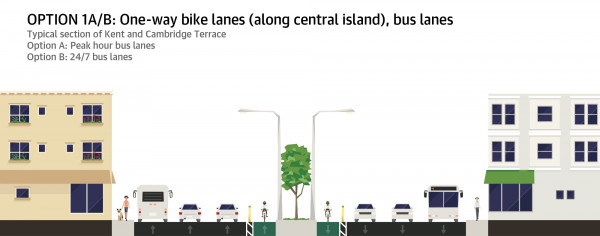
Option 2A
- Two-way bike lane on Cambridge (median side) with peak hour bus lanes
Option 2B
- Two-way bike lane on Cambridge (median side) with full-time bus lanes
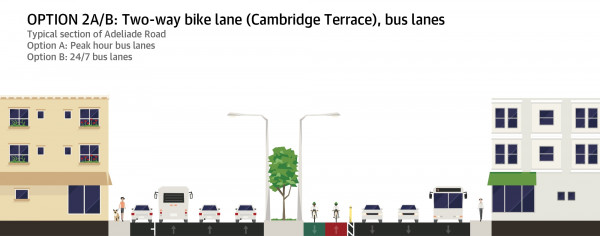
Options 2A and 2B scored the highest and we’ve gone with a combination of these two options.
Southern section – Adelaide Road and Riddiford Street
Option 1A
- Full-time shared bike and bus lanes
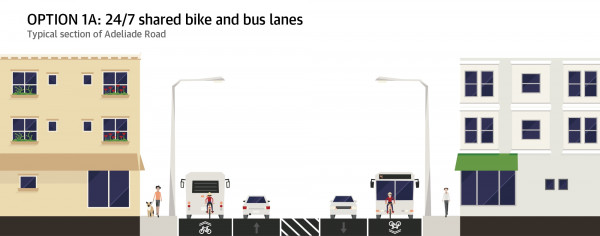
Option 1B
- Kerbside protected bike lanes and full-time bus lanes both sides
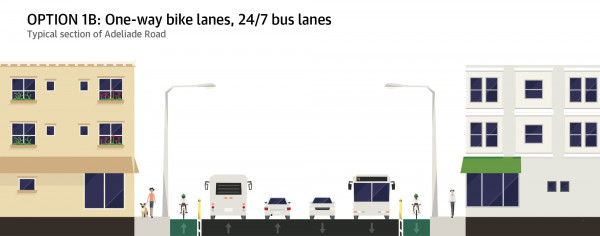
Option 2A
- Two-way bike lane, with a full-time bus lane on the eastern side (one direction only)
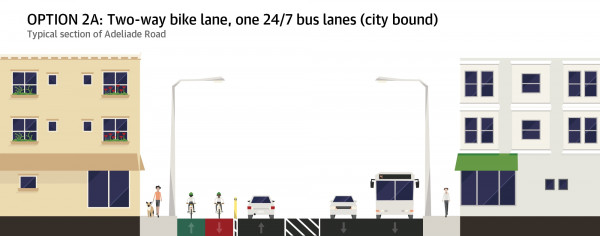
Option 2B
- Narrow two-way bike lane, with full-time bus lanes on both sides
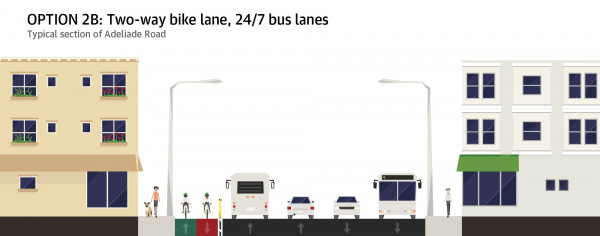
Option 1B scored the highest and this has made it through to concept design with some changes for Riddiford Street.
Considerations
Things that were considered included connections for bikes, pedestrian safety, bus lanes, street widths, street layouts including one-way systems, intersections and traffic signals, and the effect on parking. For the Newtown to city route, the community objectives developed as part of consultation on possible Newtown routes in 2018 were also considered.
Things that weren’t considered in the assessment of the long list included using alternative routes, using space on the sealed road shoulder, shared paths (except for short distances where there was no other option), shared zones and moving kerbs.
For consistency, the multi-criteria assessment (MCA) used the same criteria and considerations developed by Let’s Get Wellington Moving (LGWM). The benefits and compromises of the interim project designs can be assessed as part of future design work for LGWM projects.
Supporting documents
Look at the plans, parking management plans, detailed information on the options we considered and more.
Evaluating the changes
We'll be monitoring and evaluating the street changes alongside community feedback.
The options we considered
We developed a list of possible options that could improve this route. We looked at things from a range of perspectives.